ENiM 8 - 2015 (ISSN 2102-6629)
Sommaire
Pages
1-9
 Identification du titre jmy-nww transmis par la documentation Ă©crite issue des fouilles dâel-Bahnasa / Oxyrhynchos.
Identification du titre jmy-nww transmis par la documentation Ă©crite issue des fouilles dâel-Bahnasa / Oxyrhynchos.
 Identification of the title jmy-nww transmitted by the written sources from excavations in el-Bahnasa / Oxyrhynchus.
Identification of the title jmy-nww transmitted by the written sources from excavations in el-Bahnasa / Oxyrhynchus.
Pages
11-31
 Cet article Ă©tudie la signification de lâhiĂ©roglyphe de lâĆuf figurant un oisillon Ă lâintĂ©rieur et de ses variantes. Il examine les questions liĂ©es Ă sa signification ; la composition du hiĂ©roglyphe en comparaison avec des hiĂ©roglyphes similaires ; ses connexions mĂ©taphoriques avec dâautres hiĂ©roglyphes, ses associations et le symbolisme de la cosmogonie de lâĆuf ainsi que de son rĂŽle mythologique.
Lâobjectif principal de cet article est de mettre en Ă©vidence lâassimilation de ce hiĂ©roglyphe avec lâiconographie du dieu soleil enfant Ă lâintĂ©rieur de son disque dans la premiĂšre heure du Livre du Jour et du Livre des Morts. Cette assimilation est examinĂ©e au moyen des diffĂ©rents textes apparentĂ©s, de lâidĂ©e du dieu soleil enfant qui Ă©merge de son Ćuf et de la ressemblance mĂ©taphorique du disque solaire avec lâĆuf.
Cet article Ă©tudie la signification de lâhiĂ©roglyphe de lâĆuf figurant un oisillon Ă lâintĂ©rieur et de ses variantes. Il examine les questions liĂ©es Ă sa signification ; la composition du hiĂ©roglyphe en comparaison avec des hiĂ©roglyphes similaires ; ses connexions mĂ©taphoriques avec dâautres hiĂ©roglyphes, ses associations et le symbolisme de la cosmogonie de lâĆuf ainsi que de son rĂŽle mythologique.
Lâobjectif principal de cet article est de mettre en Ă©vidence lâassimilation de ce hiĂ©roglyphe avec lâiconographie du dieu soleil enfant Ă lâintĂ©rieur de son disque dans la premiĂšre heure du Livre du Jour et du Livre des Morts. Cette assimilation est examinĂ©e au moyen des diffĂ©rents textes apparentĂ©s, de lâidĂ©e du dieu soleil enfant qui Ă©merge de son Ćuf et de la ressemblance mĂ©taphorique du disque solaire avec lâĆuf.
 This paper deals with the significance of the enigmatic hieroglyph of a young bird within an egg, and its variations. It presents related matters of its significance; hieroglyphic structure in comparison with similar hieroglyphs; its metaphorical connections with similar hieroglyphs and the signs in its combinations as well as its symbolism to the cosmogony of the egg and its mythical role.
One of the main aims of this paper is to reveal the assimilation of this hieroglyph with the iconography of the child sun god inside his disk in the First hour of Book of the Day, and Book of the Deads, etc. This assimilation is approved and interpreted here through the various related texts, and ideas of the sun god who emerges from his egg and the metaphorical resemblance of the sun disk to the egg.
This paper deals with the significance of the enigmatic hieroglyph of a young bird within an egg, and its variations. It presents related matters of its significance; hieroglyphic structure in comparison with similar hieroglyphs; its metaphorical connections with similar hieroglyphs and the signs in its combinations as well as its symbolism to the cosmogony of the egg and its mythical role.
One of the main aims of this paper is to reveal the assimilation of this hieroglyph with the iconography of the child sun god inside his disk in the First hour of Book of the Day, and Book of the Deads, etc. This assimilation is approved and interpreted here through the various related texts, and ideas of the sun god who emerges from his egg and the metaphorical resemblance of the sun disk to the egg.
Pages
33-36
 Cet article Ă©tudie quatre nouveaux exemples de lâĂ©criture abrĂ©gĂ©e par âbâ. Le premier exemple montre que âbâ pouvait remplacer âḥbâ âfĂȘteâ. Le deuxiĂšme consiste en lâĂ©criture âb.tâ pour âʿb.tâ âlaitueâ, comme cela est discutĂ© par les chercheurs depuis quelque temps ; le spectre est ici Ă©largi par trois nouvelles interprĂ©tations. Le quatriĂšme et dernier exemple est âbâ pour âbȝqâ âbriller, ĂȘtre clairâ. Autant que possible, les explications sont phonĂ©tiques.
Cet article Ă©tudie quatre nouveaux exemples de lâĂ©criture abrĂ©gĂ©e par âbâ. Le premier exemple montre que âbâ pouvait remplacer âḥbâ âfĂȘteâ. Le deuxiĂšme consiste en lâĂ©criture âb.tâ pour âʿb.tâ âlaitueâ, comme cela est discutĂ© par les chercheurs depuis quelque temps ; le spectre est ici Ă©largi par trois nouvelles interprĂ©tations. Le quatriĂšme et dernier exemple est âbâ pour âbȝqâ âbriller, ĂȘtre clairâ. Autant que possible, les explications sont phonĂ©tiques.
 In this paper, four further Egyptian spellings with âbâ are scrutinized. In the first case, it be-comes clear, that âbâ can stand for âḥbâ âfeastâ. In the second one, it will be demonstrated that â according previous explanations â âb.tâ may be an abbreviation for âʿb.tâ = âʿbwâ âlet-tuceâ. Here, three other alternatives are suggested. In the third case, it will be shown that âbâ can be used for âwʿbâ âwʿbâ-priest. The fourth example is represented by the writing âbâ for âbȝqâ âbright, shiningâ.
In this paper, four further Egyptian spellings with âbâ are scrutinized. In the first case, it be-comes clear, that âbâ can stand for âḥbâ âfeastâ. In the second one, it will be demonstrated that â according previous explanations â âb.tâ may be an abbreviation for âʿb.tâ = âʿbwâ âlet-tuceâ. Here, three other alternatives are suggested. In the third case, it will be shown that âbâ can be used for âwʿbâ âwʿbâ-priest. The fourth example is represented by the writing âbâ for âbȝqâ âbright, shiningâ.
Pages
37-66
 Le 24 fĂ©vrier 2015 sâest tenue Ă Montpellier une table ronde rassemblant les membres du projet « La ThĂšbes des morts » inscrit dans le cadre du LabEx ArchimĂšde. Les participants ont exposĂ© le bilan dâun an de travail et, chacun dans son domaine a montrĂ© comment, au cours du Ier millĂ©naire avant J.-C., sâest manifestĂ©e la dynamique de la pensĂ©e thĂ©baine dans le domaine funĂ©raire. On trouvera ici un rĂ©sumĂ© des communications.
Le 24 fĂ©vrier 2015 sâest tenue Ă Montpellier une table ronde rassemblant les membres du projet « La ThĂšbes des morts » inscrit dans le cadre du LabEx ArchimĂšde. Les participants ont exposĂ© le bilan dâun an de travail et, chacun dans son domaine a montrĂ© comment, au cours du Ier millĂ©naire avant J.-C., sâest manifestĂ©e la dynamique de la pensĂ©e thĂ©baine dans le domaine funĂ©raire. On trouvera ici un rĂ©sumĂ© des communications.
 On February 24th 2015, in Montpellier a workshop was held gathering the members of the project âLa ThĂšbes des mortsâ as part of the LabEx ArchimĂšde. The participants have presented an overview of their work after one year, each of them, in their field, demonstrating how, during the Ist millenary B.C, the Theban way of thinking has shown in the funerary field. A summary of each of these communications can here be found .
On February 24th 2015, in Montpellier a workshop was held gathering the members of the project âLa ThĂšbes des mortsâ as part of the LabEx ArchimĂšde. The participants have presented an overview of their work after one year, each of them, in their field, demonstrating how, during the Ist millenary B.C, the Theban way of thinking has shown in the funerary field. A summary of each of these communications can here be found .
Pages
67-71
 Lâexamen d'une scĂšne figurĂ©e sur le troisiĂšme registre de la deuxiĂšme chapelle de ToutĂąnkhamon (1321) permet de cerner la nature des traits obliques, projetĂ©s par six dĂ©esses sur les tĂȘtes de six serpents, dĂ©nommĂ©s chacun « celui au mauvais visage (ḏwy-ḥr) ». Il est question de savoir sâil sâagit de dâeau ou de feu. Un examen contextuel de cette reprĂ©sentation, en particulier du nom, des caractĂ©ristiques de ces reptiles, de lâiconographie et des lĂ©gendes accolĂ©es aux divinitĂ©s, a permis de reconnaĂźtre dans ces lignes obliques des flammes. Si les mains des dĂ©esses rĂ©pandent le feu, ce geste sâexplique par la lumiĂšre du soleil quâelles incarnent et qu'elles projettent sur les ennemis de RĂȘ afin de les enflammer.
Lâexamen d'une scĂšne figurĂ©e sur le troisiĂšme registre de la deuxiĂšme chapelle de ToutĂąnkhamon (1321) permet de cerner la nature des traits obliques, projetĂ©s par six dĂ©esses sur les tĂȘtes de six serpents, dĂ©nommĂ©s chacun « celui au mauvais visage (ḏwy-ḥr) ». Il est question de savoir sâil sâagit de dâeau ou de feu. Un examen contextuel de cette reprĂ©sentation, en particulier du nom, des caractĂ©ristiques de ces reptiles, de lâiconographie et des lĂ©gendes accolĂ©es aux divinitĂ©s, a permis de reconnaĂźtre dans ces lignes obliques des flammes. Si les mains des dĂ©esses rĂ©pandent le feu, ce geste sâexplique par la lumiĂšre du soleil quâelles incarnent et qu'elles projettent sur les ennemis de RĂȘ afin de les enflammer.
 The study of a scene depicted on the third register of the second chapel of Tutankhamun (1321) helps to identify the nature of the slanting lines projected by six goddesses over the heads of six snakes, each one of them named âwicked of face (ḏwy-ḥr)â. The question is whether these lines refer to water or fire. A contextual analysis of this representation, particularly the name, the characteristics of the snakes, as well as the iconography of the goddesses and the captions attached to them, reveal that these lines represent fire. If the goddessesâ hands spread out flames, this gesture could be explained by the solar light that they represent and project towards the enemies of Re in order to burn them.
The study of a scene depicted on the third register of the second chapel of Tutankhamun (1321) helps to identify the nature of the slanting lines projected by six goddesses over the heads of six snakes, each one of them named âwicked of face (ḏwy-ḥr)â. The question is whether these lines refer to water or fire. A contextual analysis of this representation, particularly the name, the characteristics of the snakes, as well as the iconography of the goddesses and the captions attached to them, reveal that these lines represent fire. If the goddessesâ hands spread out flames, this gesture could be explained by the solar light that they represent and project towards the enemies of Re in order to burn them.
Pages
73-101
 Le verbe causatif sʿnḫ, communĂ©ment traduit par « faire vivre » ou « maintenir en vie », engage une rĂ©flexion gĂ©nĂ©rale sur les modalitĂ©s du maintien du flux vital opĂ©rĂ© par une autoritĂ©, quâelle soit de nature morale, religieuse ou politique. Il apparaĂźt que le « faire vivre » sʿnḫ ne rend jamais compte dâun acte crĂ©ateur initial, mais plutĂŽt de sa perpĂ©tuation, de son actualisation ou de sa rĂ©pĂ©tition. Ainsi, dans un contexte funĂ©raire, ce verbe sera mieux rendu par le sens « faire revivre » et, dans certaines circonstances, sʿnḫ peut encore ĂȘtre traduit par « nourrir », « approvisionner » ou encore « croĂźtre ». Cette Ă©tude sâachĂšve sur le cas du « sculpteur » sʿnḫ(w) qui rĂ©vĂšle une autre facette du champ sĂ©mantique de ce lexĂšme.
Le verbe causatif sʿnḫ, communĂ©ment traduit par « faire vivre » ou « maintenir en vie », engage une rĂ©flexion gĂ©nĂ©rale sur les modalitĂ©s du maintien du flux vital opĂ©rĂ© par une autoritĂ©, quâelle soit de nature morale, religieuse ou politique. Il apparaĂźt que le « faire vivre » sʿnḫ ne rend jamais compte dâun acte crĂ©ateur initial, mais plutĂŽt de sa perpĂ©tuation, de son actualisation ou de sa rĂ©pĂ©tition. Ainsi, dans un contexte funĂ©raire, ce verbe sera mieux rendu par le sens « faire revivre » et, dans certaines circonstances, sʿnḫ peut encore ĂȘtre traduit par « nourrir », « approvisionner » ou encore « croĂźtre ». Cette Ă©tude sâachĂšve sur le cas du « sculpteur » sʿnḫ(w) qui rĂ©vĂšle une autre facette du champ sĂ©mantique de ce lexĂšme.
 The causative verb sʿnḫ, commonly translated « to make live » or « to keep alive », involves a general reflection on the modalities of the preservation of the vital flow operated by an authority, whether it is of moral, religious or political nature. It seems that the « make live » sʿnḫ never gives an account of an initial creative act, but rather its perpetuation, its updating or its repetition. So, in a funeral context, this verb will be better rendered by the sense « to come back to life » and, in certain circumstances, s?n? can be again translated « to feed », « to supply » or still « to grow ». This study ends on the case of the « sculptor » sʿnḫ(w) who reveals another side of the semantic field of this lemma.
The causative verb sʿnḫ, commonly translated « to make live » or « to keep alive », involves a general reflection on the modalities of the preservation of the vital flow operated by an authority, whether it is of moral, religious or political nature. It seems that the « make live » sʿnḫ never gives an account of an initial creative act, but rather its perpetuation, its updating or its repetition. So, in a funeral context, this verb will be better rendered by the sense « to come back to life » and, in certain circumstances, s?n? can be again translated « to feed », « to supply » or still « to grow ». This study ends on the case of the « sculptor » sʿnḫ(w) who reveals another side of the semantic field of this lemma.
Pages
103-111
 Cet article a comme but lâanalyse des diffĂ©rents moyens de punition appliquĂ©s aux conspirateurs dans le Papyrus Judiciaire de Turin, y compris les corrĂ©lations entre des crimes et chĂątiments particuliers. En considĂ©rant quelques rĂ©sultats peu concluants, lâĂ©tude souligne lâimportance de la distinction entre exĂ©cution et suicide, ainsi que les situations oĂč on peut trouver lâun ou lâautre. On fait Ă©galement mention dâautres formes du chĂątiment, tels que la mutilation et les rĂ©primandes verbales. Finalement, la pratique de renommer les criminels est Ă nouveau examinĂ©e Ă la lumiĂšre des crimes commis par les individus concernĂ©s. Dans lâensemble, cette Ă©tude rĂ©vĂšle la possibilitĂ© de chĂątiments complexes, qui possĂ©daient en mĂȘme temps des aspects pratiques et thĂ©ologiques.
Cet article a comme but lâanalyse des diffĂ©rents moyens de punition appliquĂ©s aux conspirateurs dans le Papyrus Judiciaire de Turin, y compris les corrĂ©lations entre des crimes et chĂątiments particuliers. En considĂ©rant quelques rĂ©sultats peu concluants, lâĂ©tude souligne lâimportance de la distinction entre exĂ©cution et suicide, ainsi que les situations oĂč on peut trouver lâun ou lâautre. On fait Ă©galement mention dâautres formes du chĂątiment, tels que la mutilation et les rĂ©primandes verbales. Finalement, la pratique de renommer les criminels est Ă nouveau examinĂ©e Ă la lumiĂšre des crimes commis par les individus concernĂ©s. Dans lâensemble, cette Ă©tude rĂ©vĂšle la possibilitĂ© de chĂątiments complexes, qui possĂ©daient en mĂȘme temps des aspects pratiques et thĂ©ologiques.
 This contribution analyses the different punishments applied to conspirators in the Turin Judicial Papyrus, and investigates possible correlations between the crimes committed and the punishments applied. In view of some largely inconclusive results, particular attention is drawn to the distinction between execution and suicide and the contexts in which either of these may have been appropriate. Alongside death sentences, mutilation and verbal reprimands are also included in the study. Finally, the practice of renaming criminals is reviewed in light of the acts committed by the individuals concerned, and the possibility of punishment spanning both practical and theological spheres is considered.
This contribution analyses the different punishments applied to conspirators in the Turin Judicial Papyrus, and investigates possible correlations between the crimes committed and the punishments applied. In view of some largely inconclusive results, particular attention is drawn to the distinction between execution and suicide and the contexts in which either of these may have been appropriate. Alongside death sentences, mutilation and verbal reprimands are also included in the study. Finally, the practice of renaming criminals is reviewed in light of the acts committed by the individuals concerned, and the possibility of punishment spanning both practical and theological spheres is considered.
Pages
113-132
 Les Anciens Ăgyptiens ont dĂ©veloppĂ© des procĂ©dĂ©s originaux et simples pour rĂ©soudre de nombreux problĂšmes mathĂ©matiques. Mais pour le comprendre, il faut se dĂ©tacher de lâapproche algĂ©brique moderne. Nous rappelons dâabord quâils connaissaient la mĂ©thode de la fausse position. Cela ressort non seulement de quatre problĂšmes du papyrus Rhind, mais aussi de deux problĂšmes plus anciens contenus dans le papyrus 6619 de Berlin (nous proposons pour lâun dâeux un nouvel Ă©noncĂ©). Et nous montrons ensuite, Ă travers quatre problĂšmes â deux du papyrus de Moscou et deux du papyrus Rhind â que ce procĂ©dĂ© sâinscrivait dans un processus heuristique beaucoup plus large.
Les Anciens Ăgyptiens ont dĂ©veloppĂ© des procĂ©dĂ©s originaux et simples pour rĂ©soudre de nombreux problĂšmes mathĂ©matiques. Mais pour le comprendre, il faut se dĂ©tacher de lâapproche algĂ©brique moderne. Nous rappelons dâabord quâils connaissaient la mĂ©thode de la fausse position. Cela ressort non seulement de quatre problĂšmes du papyrus Rhind, mais aussi de deux problĂšmes plus anciens contenus dans le papyrus 6619 de Berlin (nous proposons pour lâun dâeux un nouvel Ă©noncĂ©). Et nous montrons ensuite, Ă travers quatre problĂšmes â deux du papyrus de Moscou et deux du papyrus Rhind â que ce procĂ©dĂ© sâinscrivait dans un processus heuristique beaucoup plus large.
 The ancient Egyptians developed original and simple methods to solve many mathematical problems. But to understand this, one must be careful not to project our own algebra system backwards in time. First, we point out that they knew the false position method, as is demonstrated not only by four problems in the Rhind papyrus, but also by two more ancient problems from papyrus Berlin 6619 (we propose a new wording for one of them). Second, we highlight by means of four problems â two from the Moscow papyrus and two from the Rhind papyrus â that this method was part of a much larger heuristic process.
The ancient Egyptians developed original and simple methods to solve many mathematical problems. But to understand this, one must be careful not to project our own algebra system backwards in time. First, we point out that they knew the false position method, as is demonstrated not only by four problems in the Rhind papyrus, but also by two more ancient problems from papyrus Berlin 6619 (we propose a new wording for one of them). Second, we highlight by means of four problems â two from the Moscow papyrus and two from the Rhind papyrus â that this method was part of a much larger heuristic process.
Pages
133-185
 Ă part les signes clairement identifiables de la bande zodiacale, des quatre constellations conventionnelles Ă©gyptiennes et des planĂštes, les autres dessins des deux zodiaques de Dendera semblent dĂ©river des systĂšmes de reprĂ©sentation traditionnels Ă©gyptiens. Ces reprĂ©sentations avec les figures des dĂ©cans enregistrent des phĂ©nomĂšnes cĂ©lestes et des Ă©vĂ©nements de culte rĂ©fĂ©rant qui racontent lâhistoire de la mort et la rĂ©surrection dâOsiris, la fĂ©condation dâIsis par son mari dĂ©cĂ©dĂ© et la naissance de leur enfant Horus. Ici les aspects astraux des mythes sâattachent aux phases de la lune, au cycle annuel du soleil et au lever hĂ©liaque de Sirius. Ainsi, les zodiaques, ne sont-ils pas des catalogues de constellations, mais des cartes du ciel conçus Ă un moment donnĂ© qui correspond Ă la coĂŻncidence de la pleine lune et de lâĂ©quinoxe dâautomne en 52 av. J.-C. et en 36 apr. J.-C.
Ă part les signes clairement identifiables de la bande zodiacale, des quatre constellations conventionnelles Ă©gyptiennes et des planĂštes, les autres dessins des deux zodiaques de Dendera semblent dĂ©river des systĂšmes de reprĂ©sentation traditionnels Ă©gyptiens. Ces reprĂ©sentations avec les figures des dĂ©cans enregistrent des phĂ©nomĂšnes cĂ©lestes et des Ă©vĂ©nements de culte rĂ©fĂ©rant qui racontent lâhistoire de la mort et la rĂ©surrection dâOsiris, la fĂ©condation dâIsis par son mari dĂ©cĂ©dĂ© et la naissance de leur enfant Horus. Ici les aspects astraux des mythes sâattachent aux phases de la lune, au cycle annuel du soleil et au lever hĂ©liaque de Sirius. Ainsi, les zodiaques, ne sont-ils pas des catalogues de constellations, mais des cartes du ciel conçus Ă un moment donnĂ© qui correspond Ă la coĂŻncidence de la pleine lune et de lâĂ©quinoxe dâautomne en 52 av. J.-C. et en 36 apr. J.-C.
 Besides the unambiguously identifiable depictions of the zodiacal belt, four conventional Egyptian asterisms, and the planets, the other signs that feature in the two Dendera zodiacs are shown to derive from traditional Egyptian representational systems. These images, together with the accompanying figures of the decans, are incorporated into the design of the monuments to record celestial events and related cultic acts that tell the story of Osirisâs death and resurrection, the conception of Isis from her deceased husband, and the nativity of their child, Horus. The astral aspects of these myths are connected with the phases of the moon, the yearly solar cycle, and the annual dawn rising of the star Sirius. The zodiacs are thus not catalogues of constellations but peculiar sky charts devised at specific moments of time that correspond to the coincidence of the full moon with the autumnal equinox in the years 52 BCE and 36 CE.
Besides the unambiguously identifiable depictions of the zodiacal belt, four conventional Egyptian asterisms, and the planets, the other signs that feature in the two Dendera zodiacs are shown to derive from traditional Egyptian representational systems. These images, together with the accompanying figures of the decans, are incorporated into the design of the monuments to record celestial events and related cultic acts that tell the story of Osirisâs death and resurrection, the conception of Isis from her deceased husband, and the nativity of their child, Horus. The astral aspects of these myths are connected with the phases of the moon, the yearly solar cycle, and the annual dawn rising of the star Sirius. The zodiacs are thus not catalogues of constellations but peculiar sky charts devised at specific moments of time that correspond to the coincidence of the full moon with the autumnal equinox in the years 52 BCE and 36 CE.
Pages
187-221
 Dans le voisinage immĂ©diat de lâinspectorat dâAkhmĂźm un bĂątiment de lâĂ©poque ptolĂ©maĂŻque dĂ©diĂ© au dieu Atoum a Ă©tĂ© dĂ©couvert Ă une profondeur dâenviron 5 mĂštres sous une maison Ă lâoccasion dâune fouille clandestine. Il sâagit dâune porte dĂ©corĂ©e mais non datĂ©e, les cartouches Ă©tant restĂ©s vides. Atoum est quatre fois reprĂ©sentĂ© comme serpent et une fois avec une tĂȘte du faucon. Atoum Ă©tant caractĂ©risĂ© sur ces montants de porte comme un dieu primordial, il est possible que ce monument ait fait partie de la nĂ©cropole des dieux ancĂȘtres.
Dans le voisinage immĂ©diat de lâinspectorat dâAkhmĂźm un bĂątiment de lâĂ©poque ptolĂ©maĂŻque dĂ©diĂ© au dieu Atoum a Ă©tĂ© dĂ©couvert Ă une profondeur dâenviron 5 mĂštres sous une maison Ă lâoccasion dâune fouille clandestine. Il sâagit dâune porte dĂ©corĂ©e mais non datĂ©e, les cartouches Ă©tant restĂ©s vides. Atoum est quatre fois reprĂ©sentĂ© comme serpent et une fois avec une tĂȘte du faucon. Atoum Ă©tant caractĂ©risĂ© sur ces montants de porte comme un dieu primordial, il est possible que ce monument ait fait partie de la nĂ©cropole des dieux ancĂȘtres.
 A doorway recently discovered at the slope of the historic centre of Akhmim may be part of a chapel dedicated to Akhmim in the so-called necropolis of primeval gods and at the same time may also be an oracle site of the snake-shaped god Atum. Two texts inscribed in the temple of Athribis, 15 km to the southwest, likely refer to this district too. If this interpretation is correct, these texts mention the names of two buildings that would be part of that district. The first would be iAt Mnw: âthe hill of Minâ designating the sacred hill (iAt nTryt) and the second would be TpHt-Axt referring to the tomb of Osiris. The names of the sacred snake would be Atum xns iAwt and anx-HH: âthe one with living Heh figureâ, as indicated by the text in Athribis. Moreover, this text provides the names of two sacred trees: the kbs (= ksbt)-tree and the arw-tree â neither of which can be securely identified. Nevertheless, the relation between the ksbt-tree and Min of Koptos is attested since the Middle Kingdom. It is desirable to carry out scientific excavations in Akhmim to confirm or reject the assumptions mentioned in this article. However, this will not be an easy task to realize in the near future.
A doorway recently discovered at the slope of the historic centre of Akhmim may be part of a chapel dedicated to Akhmim in the so-called necropolis of primeval gods and at the same time may also be an oracle site of the snake-shaped god Atum. Two texts inscribed in the temple of Athribis, 15 km to the southwest, likely refer to this district too. If this interpretation is correct, these texts mention the names of two buildings that would be part of that district. The first would be iAt Mnw: âthe hill of Minâ designating the sacred hill (iAt nTryt) and the second would be TpHt-Axt referring to the tomb of Osiris. The names of the sacred snake would be Atum xns iAwt and anx-HH: âthe one with living Heh figureâ, as indicated by the text in Athribis. Moreover, this text provides the names of two sacred trees: the kbs (= ksbt)-tree and the arw-tree â neither of which can be securely identified. Nevertheless, the relation between the ksbt-tree and Min of Koptos is attested since the Middle Kingdom. It is desirable to carry out scientific excavations in Akhmim to confirm or reject the assumptions mentioned in this article. However, this will not be an easy task to realize in the near future.
ENiM 18 - 2025
8 article(s) - 8 octobre 2025.
ENiM 1 à 18 (2008-2025) : 227 articles
5 289 905 téléchargements
10 551 879 consulations.
Index des auteurs

Mots clés

Derniers articles : 
CENiM - Mise en ligne des volumes Ă©puisĂ©s : 
 Anne-Sophie von BOMHARD DĂ©cans Ă©gyptiens, CENiM 23, Montpellier, 2020 — (2020)
Anne-Sophie von BOMHARD DĂ©cans Ă©gyptiens, CENiM 23, Montpellier, 2020 — (2020) 
 Jean-Claude Grenier L'Osiris ANTINOOS, CENiM 1, Montpellier, 2008 — (26 dĂ©cembre 2008)
Jean-Claude Grenier L'Osiris ANTINOOS, CENiM 1, Montpellier, 2008 — (26 dĂ©cembre 2008) 
TDENiM - Mise en ligne des volumes Ă©puisĂ©s : 
 Twitter
Twitter 4203884 visites - 11834 visite(s) aujourd’hui - 141 connecté(s)
© ENiM - Une revue d’égyptologie sur internet
Équipe Égypte Nilotique et Méditerranéenne - UMR 5140 - « Archéologie des Sociétés Méditerranéennes » (Cnrs) - Université Paul Valéry - Montpellier III
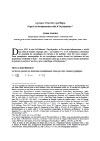
 Télécharger cet article au format pdf
Télécharger cet article au format pdf 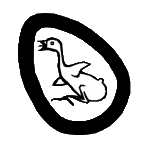 and its assimilation with the iconography of the sun god »
and its assimilation with the iconography of the sun god »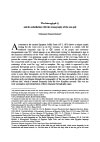
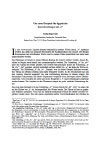
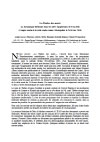


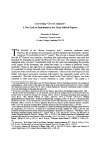
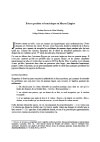
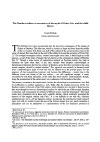
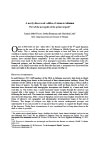





















 Contact
Contact
 Abonnez-vous !
Abonnez-vous ! Équipe Égypte Nilotique et Méditerranéenne
Équipe Égypte Nilotique et Méditerranéenne UMR 5140 « Archéologie des Sociétés Méditerranéennes » (Cnrs)
UMR 5140 « Archéologie des Sociétés Méditerranéennes » (Cnrs) Université Paul Valéry - Montpellier III
Université Paul Valéry - Montpellier III